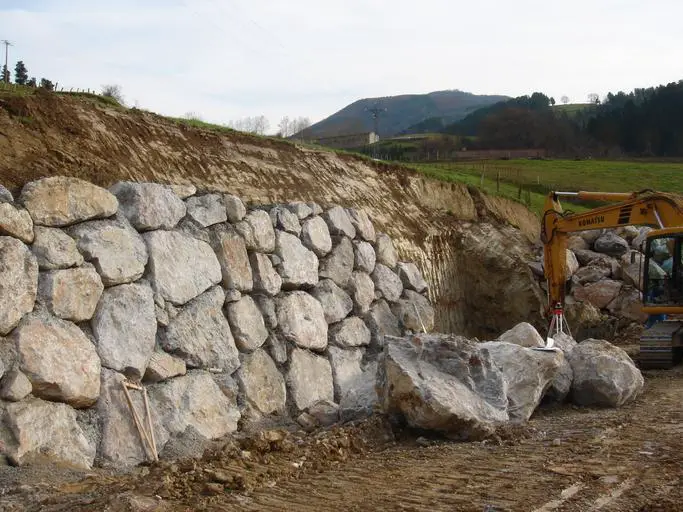With the boulder wall calculator below you can estimate the tons of boulders needed for a boulder retaining wall. You can choose a variety of boulder sizes and types to customize your calculation.
BOULDER WALL CALCULATOR
*Note – The materials densities and coverages are averages derived from multiple landscape material suppliers. These numbers can vary significantly from supplier to supplier.
How To Use This Calculator
Wall Dimensions
First, enter the length and average height of the wall you are building. The average height can be found by first taking several measurements every few feet. Then, add these up and divide by the total number of measurements taken.
Rock Type
Next, choose the type of rock you will use. If you are unsure, choose fieldstone. Fieldstone is usually sold as a combination of granite, limestone, and sandstone. This is a very common combination used in boulder walls.
Boulder Size
Now you can choose your boulder size based on the following recommended minimum boulder sizes:
-
- 6″-12″ boulders for walls up to 2.5′
- 12″-18″ boulders for walls up to 4′
- 18″-24″ boulders for walls up to 6′
- 24″-36″ boulders for walls over 6′
Obviously there is some wiggle room here. Just remember, bigger is better.
Soil Type
Finally, choose the type of soil you have at the location you are building the wall and hit calculate.
If you have silty/clay soils, the boulder wall calculator will include an estimate for drainage gravel that is recommended behind the wall.
Also remember to add compacted gravel under the first course if you have silty/clay soils or soft soils that don’t compact well. This will give the boulder wall a solid foundation to sit on. It will also protect against freeze/thaw heaving.
Tips for Installing Boulder Retaining Walls
-
- Bigger is better. Boulder size should increase as wall height increases. Heavier walls are more resistive to erosion, freeze/thaw cycles, etc.
- Walls over 8 feet (sometimes even over 4′) need engineering (i.e. use Geogrid)
- Better to order a little less than you think you need as trying to return massive boulders can be a pain
- Use a 3″-6″ compacted gravel base in soft soils
- Bury 1/3 to 1/2 of first course (row) so bottom of wall can’t slide out
- Add drainage rock behind wall in poorly draining (i.e. clay) soils, similar to a French drain.
- Use fabric behind boulders in sandy/gravely soils
- Don’t use fabric in clay/silty soils as fabric will plug up, bulge, and push the wall forward
- Always put bigger boulders on bottom
- Set courses (rows) back 3 inches per foot of wall height
- Stagger rows so seams don’t line up
- Spend time piecing together wall for tightest fit
- Place small face of boulders out. For example, if a boulder is shaped like a shoebox then put one of the ends of the shoebox facing outwards. You will use more rock this way but the wall will be MUCH stronger.
- Plant gaps between boulders to improve wall durability
Boulder walls can be a beautiful and durable solution as a retaining wall or purely for decorative purposes. When constructing a boulder wall, remember that bigger is better for boulder size. Using bigger boulders will lead to a much longer lasting wall. For further knowledge on constructing boulder walls, click here to see the most common reasons why boulder walls fail.



